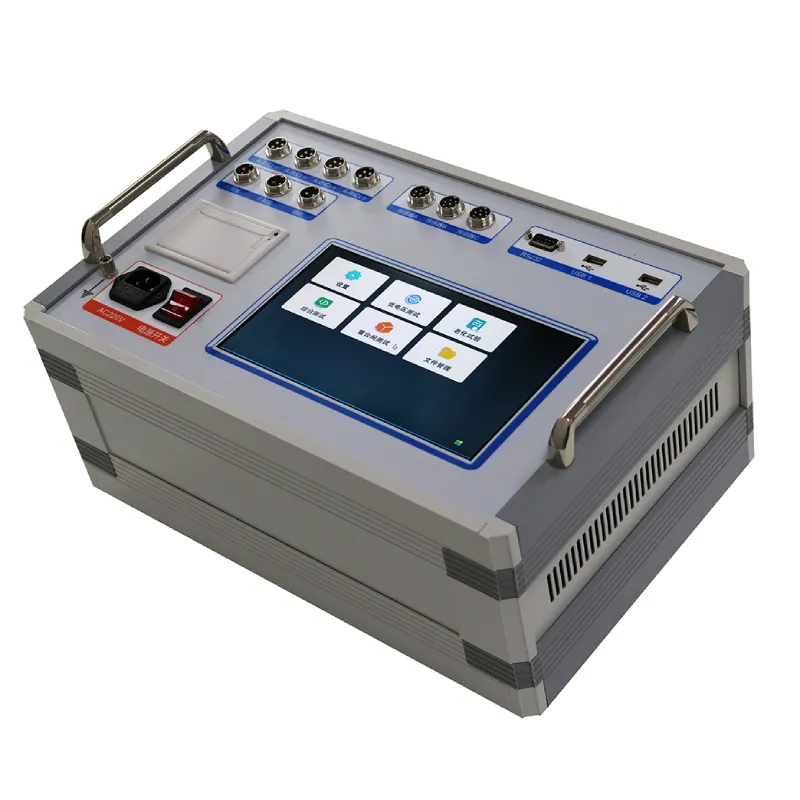 English
English


Understanding the Basics and Applications of an Inductance Testing Device for Electrical Components
Understanding an Inductance Tester A Key Tool for Electronics Enthusiasts
Inductance testers are essential instruments in the field of electronics, primarily used to measure the inductance of coils, inductors, and transformers. Inductance is a property that quantifies how much magnetic field a coil of wire can generate in response to an electric current. This measurement is crucial for engineers and hobbyists alike to ensure that the components in their circuits are functioning correctly and efficiently.
The Importance of Inductance in Circuits
Inductance plays a vital role in various electronic applications, particularly in power supplies, radio frequency circuits, and in the design of filters. Inductors can store energy in a magnetic field, which is pivotal for energy transfer in inductive loads. Understanding the inductance value helps in designing circuits that meet specific operational standards and efficiency levels. If an inductor has the wrong inductance value, it can lead to circuit malfunctions, inefficient energy use, or even component damage.
How Inductance Testers Work
An inductance tester operates by applying a known alternating current (AC) to the inductor and observing the resulting voltage. The tester calculates inductance using the relationship between voltage, current, and frequency. Most modern inductance testers are digital devices that provide precise measurements and often include additional features, such as the ability to measure resistance and capacitance.
Many inductance testers utilize a bridge circuit method, which compares the unknown inductance with a reference inductor. Other models may use a microcontroller to analyze the signal processing and provide a digital readout of the inductance value. Both methods ensure accuracy and reliability in measurement.
inductance tester

Features of Modern Inductance Testers
Today’s inductance testers come packed with various features that enhance user experience and increase measurement accuracy. High-end models may offer
1. Wide Measurement Range Capable of measuring small inductors (like those found in RF applications) to larger inductance values used in power systems. 2. Automatic Range Selection This feature automatically selects the best range for the measurement, making operation more straightforward, especially for beginners. 3. Clear Digital Display A bright LCD or LED display for easy readability, allowing for quick interpretation of results. 4. Data Logging Capabilities Some testers can store and log measured values, which is useful for ongoing tests or for documenting the performance of inductive components over time. 5. Multiple Testing Modes Advanced units may include features for testing inductance, resistance, and capacitance in one device, providing versatility for electronic diagnostics.
Practical Applications of Inductance Testers
In practical terms, inductance testers are utilized in various scenarios. For example, in manufacturing, they ensure that inductors meet specified tolerances before assembly into electronic devices. In repairing equipment, technicians use them to test and replace faulty components. For educators and students, these devices offer hands-on experience in understanding inductive properties and circuit design.
Conclusion
In summary, an inductance tester is an invaluable tool for anyone involved in electronics. Its capability to measure inductance accurately aids in ensuring the reliability and efficiency of circuits, which is critical in today’s technology-driven world. Whether you are a seasoned professional or an enthusiastic beginner, having access to an inductance tester can enhance your understanding of electrical components and improve your overall project outcomes. With advancements in technology, these testers continue to be refined, making them more user-friendly and precise, fostering a deeper exploration into the world of electronics.
-
Differences between open cup flash point tester and closed cup flash point testerNewsOct.31,2024
-
The Reliable Load Tap ChangerNewsOct.23,2024
-
The Essential Guide to Hipot TestersNewsOct.23,2024
-
The Digital Insulation TesterNewsOct.23,2024
-
The Best Earth Loop Impedance Tester for SaleNewsOct.23,2024
-
Tan Delta Tester--The Essential Tool for Electrical Insulation TestingNewsOct.23,2024





